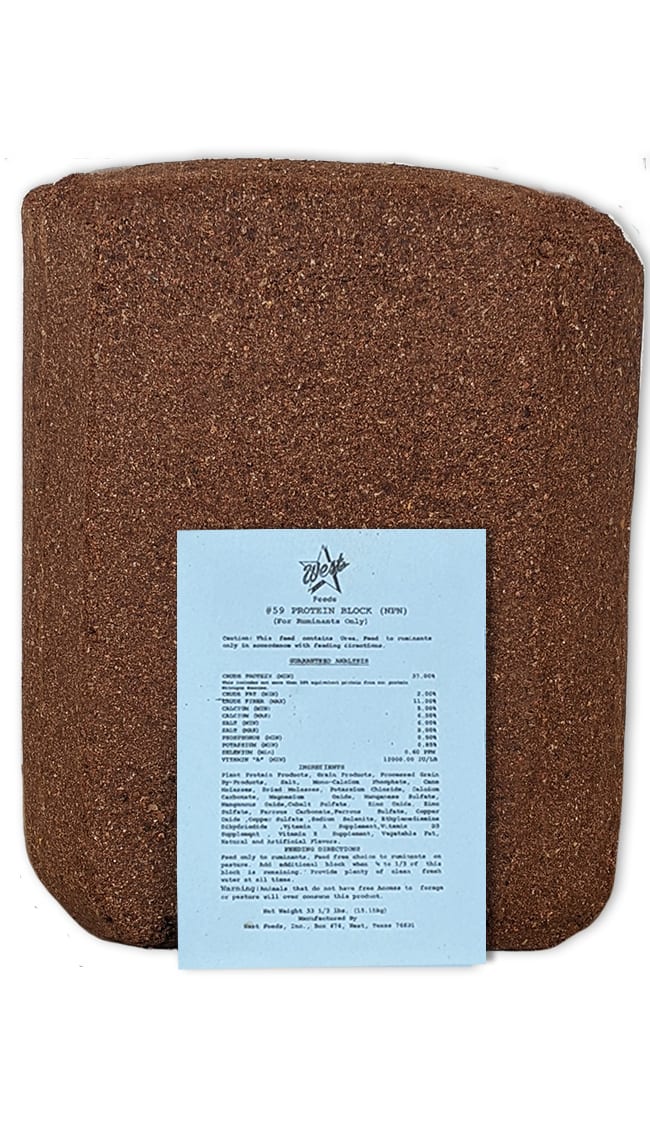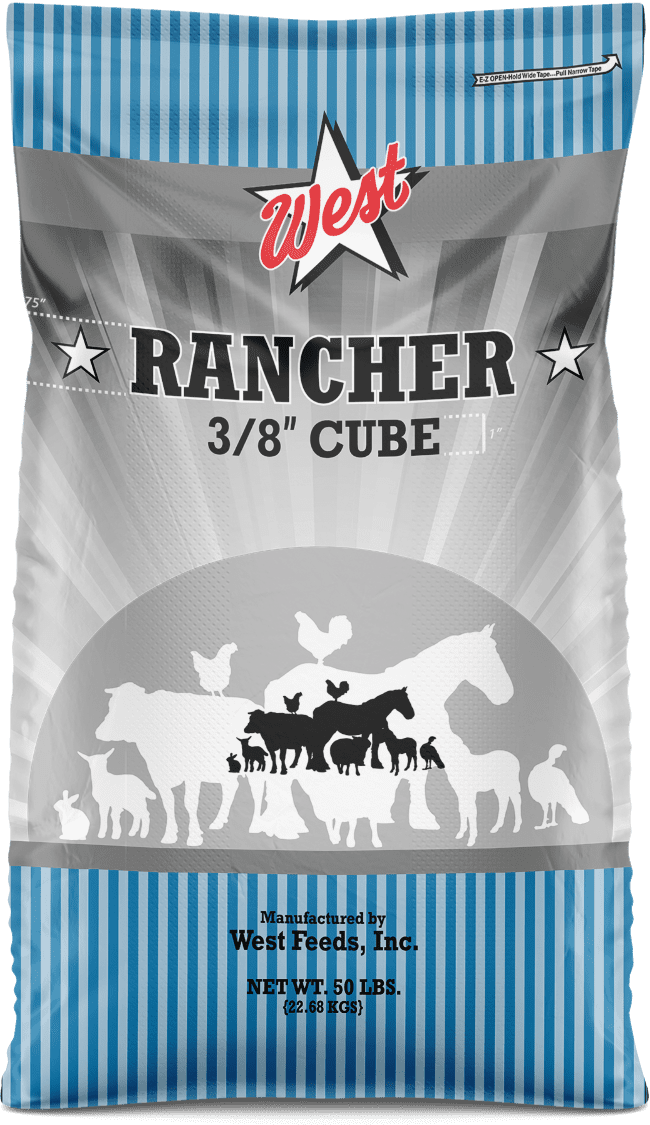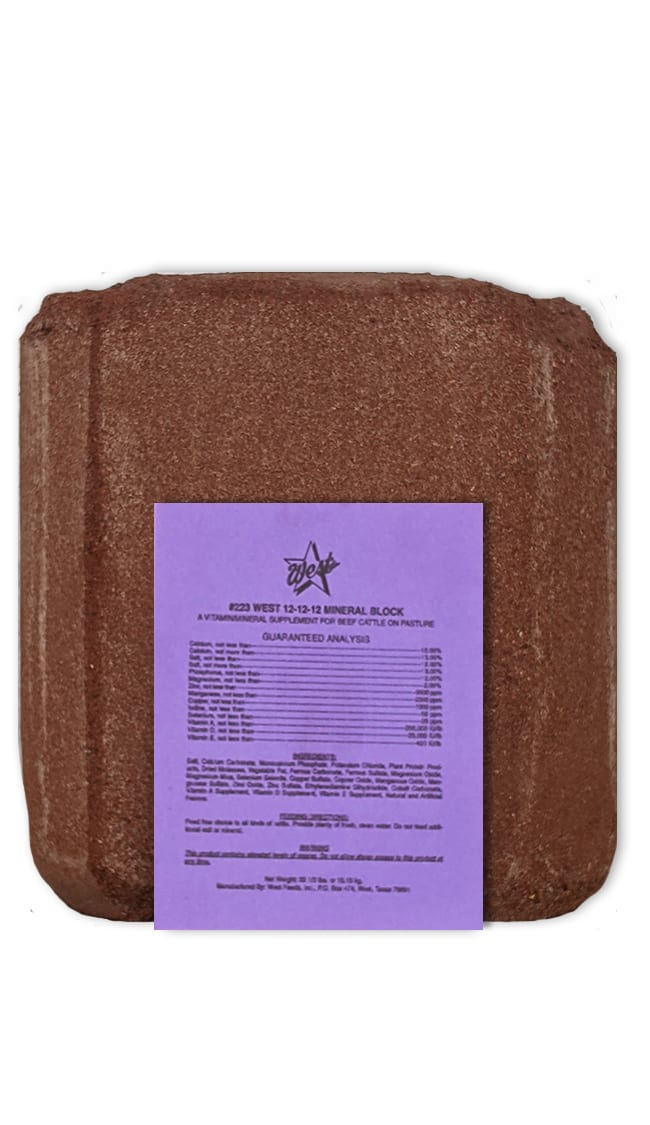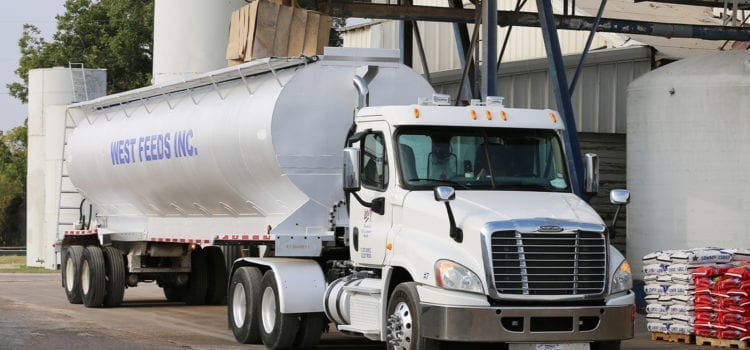Any successful goat farming operation has at least one thing in common: high-quality goat feed. Ensuring your goats get the right feed can be the difference between a productive season (full of plenty of excellent milk and meat) and disaster.
So, how do you know if a specific goat feed can help improve health and production? Well, you’ll need to know a thing or two about goat nutrition.
With this guide, we’re going to break things down to help you learn the essentials. By the time you’re done reading, you’ll be able to tell whether or not a feed has the nutrients your goats need to thrive and set your operation up for success.
In this guide, you’ll learn:
- What nutrients goats need
- How goat feed requirements change as they age
- How to make sure your goat feed has enough nutrients
- Which problems can develop if goats have poor nutrition
What Nutrients Do Goats Need?
The six major nutrients goats need are carbohydrates, fats, proteins, vitamins, minerals, and water.
Carbohydrates or sugars are a goat’s primary energy source.
Fats provide energy, too, at more than twice the rate carbohydrates do. Also known as lipids, fats are important in creating certain hormones, like steroid hormones, required for goats reproduction.
Proteins have many crucial functions in the body—they support muscles, regulate metabolism, and help kids grow to their adult size.
Vitamins are required in small amounts to help regulate a goat’s metabolism and keep bones in good health.
Minerals also support bone health and keep oxygen flowing throughout the body.
Water is the most important nutrient for all types of animals, goats included. Goats require about one-half to a full gallon of water each day, but in hot temperatures, they’ll require more. Lactating nannies need to drink more water than usual, too.
Where Can I Find These Nutrients?
The core of a goat’s diet is roughage—plants like hay, grass, or alfalfa. Goats get the carbohydrates (and energy) they need to go about their day mostly through roughage.
Cellulose, better known as fiber, is an essential carbohydrate for goats. Just like people, goats can’t break down fiber themselves. However, goats are ruminant animals, with a special organ known as a rumen. Bacteria live inside the rumen which converts cellulose into energy for goats.
Many types of roughage are packed not only with carbohydrates but also protein and minerals. Feeding goats concentrates, such as grains like wheat, barley, and oats, is another way to make sure your goats get enough protein.
Important vitamins are usually produced in enough supply internally, but you can also supplement if needed.
As for water, free choice is the way to go—lack of water disrupts a goat’s performance to a greater degree than any other deficiency. Different goats have different requirements, so make sure they can get as much water as they need.
Do Goat Feed Requirements Change as Goats Age?
Yes, definitely!
In the first stage of life, newborns can get by on milk alone for a while (although you should consider creep feeding as well). Kids are weaned when they are between 2 and 6 months old, and then they need lots of protein to fuel their rapid growth.
If you have plentiful pastures for them to graze on as desired, that should be enough. If not, try a starter/grower feed. These starter/grower feeds are easy on the stomach and packed with the protein their bodies need to grow.
Goats can continue eating these feeds as adults, and grain-based feeds help them grow faster.
What About Breeding Goats?
First of all, it’s important that breeding does be at an optimal weight. This means a body condition score of 3 (BCS 3). A doe with BCS 3 has some fat on their ribcage (you shouldn’t be able to clearly see the spacing between rib bones) and their backbone should be visible but not protruding.

If your does are underweight, try flushing them. Flushing just means giving them more calories and more energy. Concentrates are a good choice for this purpose—about ½ pound of concentrates every day in the 2 weeks leading up to the breeding season is enough to encourage healthy reproduction.
Does don’t need a lot of food during the first two trimesters of pregnancy. Free choice roughage or pasture is enough.
In the third trimester—the final 50 days of pregnancy—they do need a lot of nutrition. At this point the fetus is growing rapidly, actually quadrupling in size!
In the third trimester a doe can’t actually eat a higher quantity of food because the growing fetus is compressing the rumen. You’ll have to give them a complete goat feed that’s packed with energy so that they can get more energy with less volume.
High-quality hay is also a good idea for goats in the last stage of pregnancy.
Lactating nannies also require more energy. Don’t be too concerned if they lose some weight—lactation is so taxing on their bodies that they’ll probably lose weight even if you’re feeding them well.
Once the kids are weaned, the mother will enter what’s called the “dry period.” Their nutritional needs drop and the body begins to fill back out. Do consider adding a salt and mineral supplement to their diet.
How Can I Make Sure My Goat Feed Has Enough Nutrients?
First, remember that goats require about 2.5%–3 % of their weight in dry matter each day. Dry matter (or DM) is the weight of the feed measured without any water content. Determining a feed’s dry matter weight can help you accurately compare the nutrient value of different feeds.
The measurement of the feed as a whole—water and other nutrients included—is called “as fed.”
Total digestible nutrients (TDN) approximates how much energy is in the feed, measured as a percentage of the DM.
It’s also important to note the amount of crude protein in goat feed. By calculating the TDN and crude protein in a feed, you can determine whether or not the goats are getting enough energy and make adjustments accordingly.
What Problems Can Develop if My Goats Have Poor Nutrition?
Goats that get too little or too much nutrients can develop all sorts of problems. Certain plants and chemical fertilizers can also be poisonous to goats. Below are some of the most common conditions you need to watch out for.
Acidosis
Too much starch in a goat’s diet can cause acidosis. This condition has to do with bacteria in the rumen, which convert the starch into lactic acid. Symptoms of acidosis include lack of appetite, lack of rumination, depression, and staggering.
Goats often get acidosis, refrain from eating for a day or two, and clear the problem themselves. If not, reduce the amount of grain in their diet.
Enterotoxemia
Feeding your goats too much concentrates too quickly can cause enterotoxemia. Be on the lookout for this condition, especially during flushing. Too much concentrate can cause bacteria types in a goat’s small intestine to multiply too rapidly and begin releasing deadly toxins.
Diarrhea is the most common symptom of enterotoxemia, but death typically results rapidly. The main way to prevent this condition is to moderate how much concentrates you give your goats. There is also a vaccine available, so be sure to administer it to your herd.
Bloat
Bloat—as its name implies—is caused by overeating. Specifically, it’s caused by too much grain or protein in a goat’s diet. This condition can kill the animals in as little as 60 minutes. The primary way to avoid this issue is by not overfeeding your goats grain.
Legumes, which are high in protein, are often another culprit. Be sure to mix legumes with grasses so that legume density is not too high in a single pasture area.
Another strategy is to feed goats roughage first so that they aren’t too hungry when sent out to graze. Additionally, don’t send them out to pasture when dew is still on the ground or too soon after it has rained. Wet pasture seems to increase frothy bloat at turn in, so always let the moisture burn off first.
Grass Tetany
Grass tetany can occur when goats have low levels of magnesium, which is typically caused by goats having too much potassium in their diet. Certain grasses, like wheat and rye are high in potassium.
To avoid grass tetany, make sure your herd is not grazing for too long. Also, let your goats out to pasture only after you’ve fed them with roughage so that they’re not eating too much.
If they already have grass tetany—symptoms include staggering, muscle twitching, and even convulsions—try supplementing with magnesium.
Ketosis
Ketosis can occur during a nanny goat’s third trimester. Remember how we mentioned fetuses quadruple in size at this time? And how does won’t be able to eat enough food to maintain weight?
If this happens, the body begins turning to fat stores for energy. Metabolizing fat needs sugar, but the doe may not have enough to keep up. Ketones can be produced, eventually building to toxic levels that result in coma and eventual death.
Overweight and underweight does are more likely to develop this condition—this is part of why it’s so important to make sure your does have a body condition score of 3 before breeding.
Hypocalcemia
Hypocalcemia literally means “low calcium.” Calcium is important in muscle function, so symptoms of hypocalcemia include lethargy, difficulty walking, or even collapse.
To avoid this issue, make sure your goats have a proper supply of calcium.
Urinary Calculi
If there’s more calcium than phosphorus in a goat’s diet, it can combine with magnesium to form stones—calculi—in the bladder. These can cause blockages in the urethra, potentially leading to death. The condition is more common in males.
The best way to avoid urinary calculi is to ensure that your goats’ calcium to phosphorus intake is at a ratio of 2:1—that is, you should give them twice as much calcium as phosphorus.
White Muscle Disease
Not enough selenium in a goat’s diet can lead to white muscle disease. White muscle disease causes a goat’s muscles to be damaged and scarred with white streaks, hence the name.
Kids are the usual victims of this condition. To treat, inject kids with vitamin E and selenium. However, be careful as selenium overdose has not been thoroughly studied in goats and may lead to other, even life-threatening issues.
Polioencephalomalacia
This mouthful of a term simply refers to “goat polio,” which occurs when the production of thiamine (vitamin B1) in the rumen is blocked, as can often happen with anti-coccidiosis medications. Coccidiosis is the most common cause of diarrhea in goats between 3 weeks and 5 months of age.
Goat polio damages the brain. Thiamine injections can reverse the problem, but only if it’s caught early enough. A goat laying on its side with head held back and legs extended probably has the condition.
Nitrate Poisoning
Nitrogen fertilizer, along with a lack of rain, can cause problems with grasses in your field. As grasses grow, they suck up the nitrogen from the soil, and too little water means it turns into nitrates. If your goats then eat these plants, it can result in nitrate poisoning which leads to insufficient oxygen flow and death. To prevent this problem, avoid using nitrogen fertilizer on your fields during dry periods.
Prussic Acid Poisoning
If goats eat leaves or branches from cherry, plum, or peach trees (any member of the Prunus family), they can develop prussic acid poisoning. Prussic acid in these plants turns into hydrogen cyanide when damaged—for example, if they’re covered in frost. The same goes for sorghum, sudangrass, and johnsongrass. Hydrogen cyanide interferes with red blood cells so that the body doesn’t get enough oxygen.
Make sure your goats don’t have access to these trees and only keep sorghum, sudangrass, or johnsongrass in your pastures until frost comes.
Conclusion
Making sure your goats have proper nutrition is not difficult, but there are some things you should definitely remember.
To summarize:
- Provide goats with around 2.5%–3 % of their body weight in dry feed each day.
- Allow goats free access to plentiful water.
- Make sure breeding goats are around BCS 3—average weight.
- Goats should get twice as much calcium as phosphorus.
- Don’t let goats eat leaves or branches from trees in the Prunus family or sorghum, johnsongrass, or sudangrass that has been damaged.
If you remember these tips, you’ll be well on your way to having a productive goat operation.





